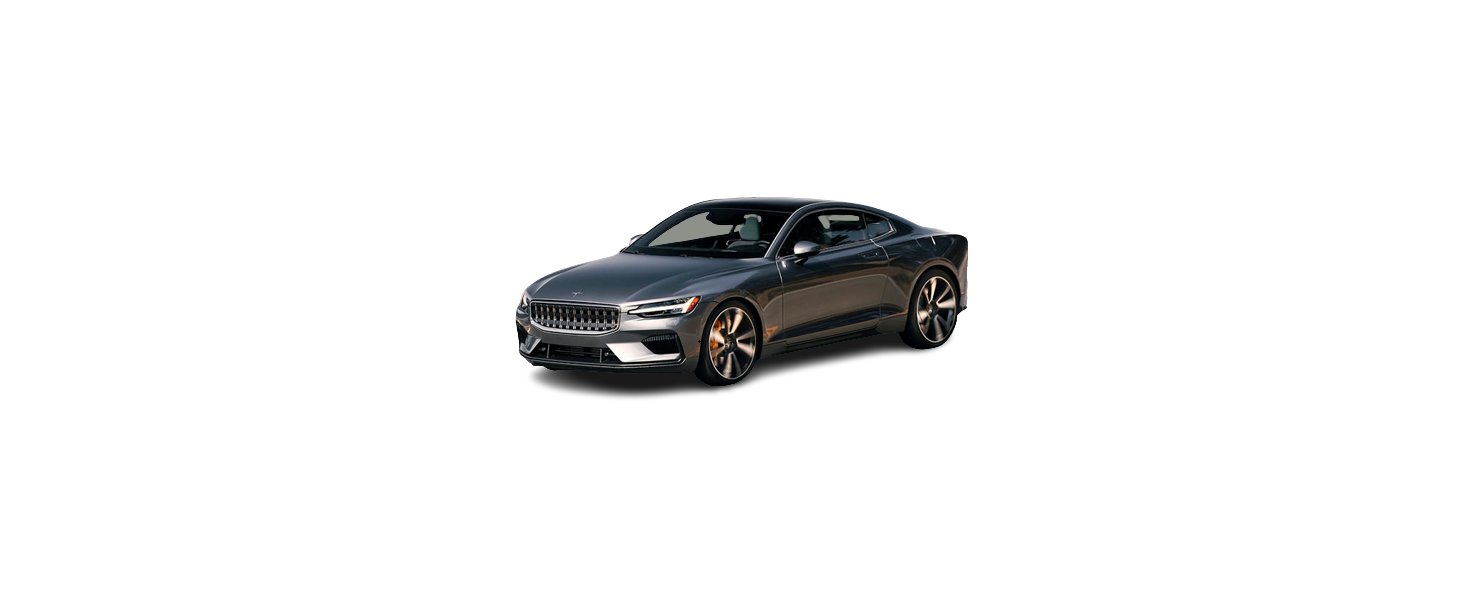2021 Polestar 1 Driving in winter
Preparing for a long trip
It is important to have the vehicle’s systems and equipment checked carefully before driving long distances.
Check that
- the engine is running properly and that fuel consumption is normal
- there are no leaks (fuel, oil, or other fluid)
- the brake pedal is functioning properly
- tire tread depth and air pressure are at correct levels. Change to snow tires when driving in areas where there is a risk of snowy or icy roads
- the start battery is sufficiently charged
- the wiper blades are in good condition
It could also be a good idea to make sure the maps in the navigation system are up to date, and to check requirements for vehicle loads, ferries, car trains, etc.
Keep in mind that data roaming charges may apply if the vehicle is connected to the Internet while in another country or service area.
Snow chains
Polestar recommends only using snow chains on the following wheel dimensions:
- Rims: 10x21x30
- Tires: 285/30R21
To ensure propulsion on rear wheels and for the best possible traction, the drive mode Constant AWD should be used in combination with snow chains.
Snow chains must only be used on the rear wheels (also applies to all-wheel drive cars).
Use Polestar genuine snow chains or equivalent snow chains that are suitable for the vehicle model and the tire and wheel sizes. Only one-sided snow chains are permitted.
Contact Polestar Customer Support if you have any questions regarding the use of snow chains. The use of the wrong snow chains could cause serious damage to the vehicle and result in an accident.
Using snow chains could result in a malfunction of the system for monitoring tire inflation pressures*.
Snow chains can be used on the vehicle, with the following restrictions:
- Always follow the manufacturer’s installation instructions carefully. Install chains as tightly as possible and retighten periodically.
- If accessory, aftermarket, or “custom” tires, and wheels with different dimensions than the original tires and wheels are used, snow chains in some cases may NOT be used. Sufficient distance between the chains and brakes, suspension, and body components must be maintained.
- Check local regulations regarding the use of snow chains before installing.
- Never exceed the snow chain manufacturer’s specified maximum speed limit. Under no circumstances should you exceed 50 km/h (30 mph).
- Avoid bumps, holes, or sharp turns when driving with snow chains.
- Avoid driving on surfaces without snow as this wears out both the snow chains and the tires.
- The handling of the vehicle can be adversely affected when driving with chains. Avoid fast or sharp turns as well as locked wheel braking.
- Some types of strap-on chains affect brake components and therefore must NOT be used.
Contact Polestar Customer Support for more information about snow chains.
Snow tires
Polestar recommends snow tires with specific dimensions. The tire dimensions vary depending on the engine type. When driving with snow tires, the correct type of tires must be mounted on all four wheels.
Contact Polestar Customer Support for assistance determining the most suitable rims and tires.
Tips for changing snow tires
When switching between regular tires and snow tires, mark the tires according to which side they were mounted on, e.g. L for left and R for right.
Legislation concerning the use of studded tires may vary. Always follow local laws and regulations.
Tread depth
Road conditions with ice, slush, and low temperatures place considerably higher demands on tires than summer conditions. Polestar, therefore, recommends not driving on snow tires that have a tread depth of less than 4 mm (0.15 in.).
Winter driving
Before the cold season arrives:
- Make sure the engine coolant contains 50% antifreeze. This mixture helps protect the engine from frost erosion down to approx. –35 °C (–31 °F). Do not mix different types of antifreeze as this could pose a health risk.
- Keep the fuel tank well filled to prevent condensation from forming.
- Check the viscosity of the engine oil. Oil with low viscosity (thinner oil) improves cold-weather starting and reduces fuel consumption when driving with a cold engine.
- Check the condition and charge level of the start battery. Cold weather places greater demands on the start battery and reduces its capacity.
- Use washer fluid containing antifreeze to help prevent ice from forming in the washer fluid reservoir.
See separate section for engine oil recommendations.
Slippery driving conditions
To help optimize traction and road-holding, Polestar recommends using snow tires on all wheels whenever there is a risk of snow or ice on the road.
Certain countries require the use of winter tires by law. Not all countries permit the use of studded tires.
Practice driving on slippery surfaces under controlled conditions to learn how the vehicle reacts.


